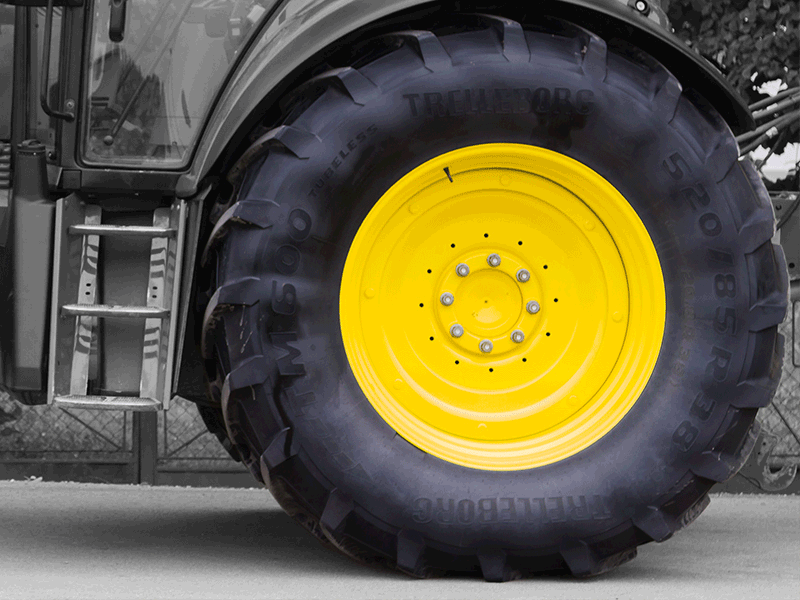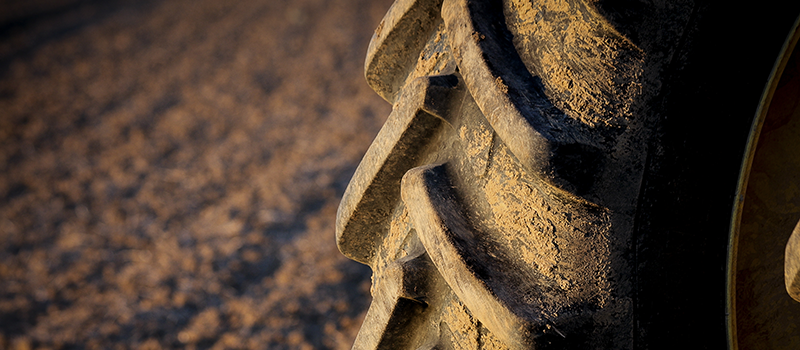As a farmer or agricultural professional, having working equipment that lasts is vital for long-term success. Your profession may have you wearing many hats and having an eye on every aspect of your operation is a full-time job. However, when facing big-picture aspects of the day-to-day, small details may slip through the cracks and lead to costly issues down the road.
Tires are the third most expensive wear component on agricultural equipment, so having a solid understanding of your tires health and value is pertinent. Knowing how to measure tread depth and address potential issues can help you keep business moving and save you from costly headaches.
With the right tools in hand, as well as modern updates to classic techniques, you can have a better understanding of your tires actual value. Continue reading to learn more about how you can measure the tread depth of your agricultural vehicles.
How to Use an Ag Tire Tread Depth Gauge
When you first started driving a vehicle, you may have learned the fast and easy method of checking your tire’s tread using a penny. However, due to agriculture tire sizes and cost, they require a bit more knowledge for measuring wear and tear. The larger tires and deeper treads can be misleading when it comes to taking consideration of tire wear and deterioration by sight alone.
In order to measure your tire tread depth properly, it is important to utilize the proper tools. An Ag Tire Tread Depth Gauge can help you take accurate measurements of your tire tread, give you guidance on when to replace your tires, and determine their remaining value.
Here is a short step-by-step process to properly use a tire tread depth gauge:
1.) Remove the probe/gauge from its metal barrel and insert it perpendicularly back through the bored hole in the barrel with the 0/32nds // 0mm side down.
2.) Push the probe 50-75% of the way through the barrel. The amount below the barrel should be greater than the depth of your tire lugs
3.) Center the “0” end of the probe between 2 lugs on your tire, ensuring you do not place on a rib (high point), as this will give the appearance of less tread remaining than what actually is.
4.) Slowly slide the metal barrel down the probe until it rests atop 2 separate lugs on the tire.
5.) Hold the gauge in place, and turn the top of the probe until the measurement (32nds or mm’s) lines up even with the side of the barrel.
6.) Slide the rubber locking ring against the probe to hold it in place.
7.) Note the measurement reading at the BOTTOM of the metal barrel, not the arc of the bore hole. If the rubber ring is holding the probe in place you can carefully lift the whole gauge off the tire, and bring to eye level for a more accurate reading.
8.) Make note of any uneven tire wear between the inside and outside set of lugs, measure both sides separately if this is a concern.
9.) Repeat these steps several times in various areas around the tire as discussed in the next section.
Where to Measure on Ag Tires
Tractor tires and other agricultural equipment are much larger than vehicle tires, and the tread will often look much different. This means that you must know where and how to properly measure tread depth to get the right reading. You will also need to take more measurements across the tires more often to ensure that you get a proper reading.
When working with tractor tires, it is important to face the tire head-on and break the sides of the tread into thirds. This will help you get an accurate and even measurement across the entire tread of the tire – and give you an idea if the tires are wearing unevenly.
The tire tread depth gauge will give you measurements within 1/32 of an inch (or 1 millimeter). As you perform multiple measurements from around the tire, add all of your readings together, then divide by the total number of readings performed to give you a single data point. You can use this average to get an idea of the entire tire tread’s health.

Take measurements of the tire in three different areas
Turn Data into Practical Information with the TreadSure® Mobile App
Once you’ve taken your measurements and averaged out the data, it is important to know what those measurements mean. Knowing your current tread depth information alone is useful, only comparing it to what the tires tread depth was brand new and determining the tires remaining tread percentage, can you begin to equate your data to dollars. These valuable insights that can save you thousands each year if you buy/sell used equipment and tires, and can also help farmers know when to replace their tires based upon the ‘Lifecycle of an Ag Tire’.
By entering your measurements in the TreadSure® mobile application, you can compare your tread depth with industry information from over 30 ag tire manufacturers – helping you save time and money.
The TreadSure® app will give you real-time data on your tires condition and give insights as to the expected life expectancy of your tire based on your tread depth. Factoring in particulars such as stubble damage, tire age, and weather checking can help you better plan for when to repair and replace your tires – priceless information that will save you time and resources each year.
The Value of Proper Ag Tire Care
As you build and operate your agriculture business, understanding the value of your assets is paramount to success. With the proper skills and techniques in hand, you can begin to better plan for how you will scale your business with the right equipment for your equipment needs.
Not only will you need to know how to take proper tire tread depth measurements, but you will need to learn the signs of wear and tear. You should take the time to learn how stubble damage can begin to speed up the deterioration of your tires, as well as how your average climate and weather conditions can wear on your equipment’s tires. When it comes to the agricultural business, knowledge is power and money.
Build regular ag tire tread depth checks into your maintenance and care routine. Taking the time to check each tire and utilize the data in the TreadSure® app will help you track, budget, and plan for tire repairs and replacements over time. The difference may mean thousands of dollars saved each year – helping you invest in your farm or agriculture business in new ways.
